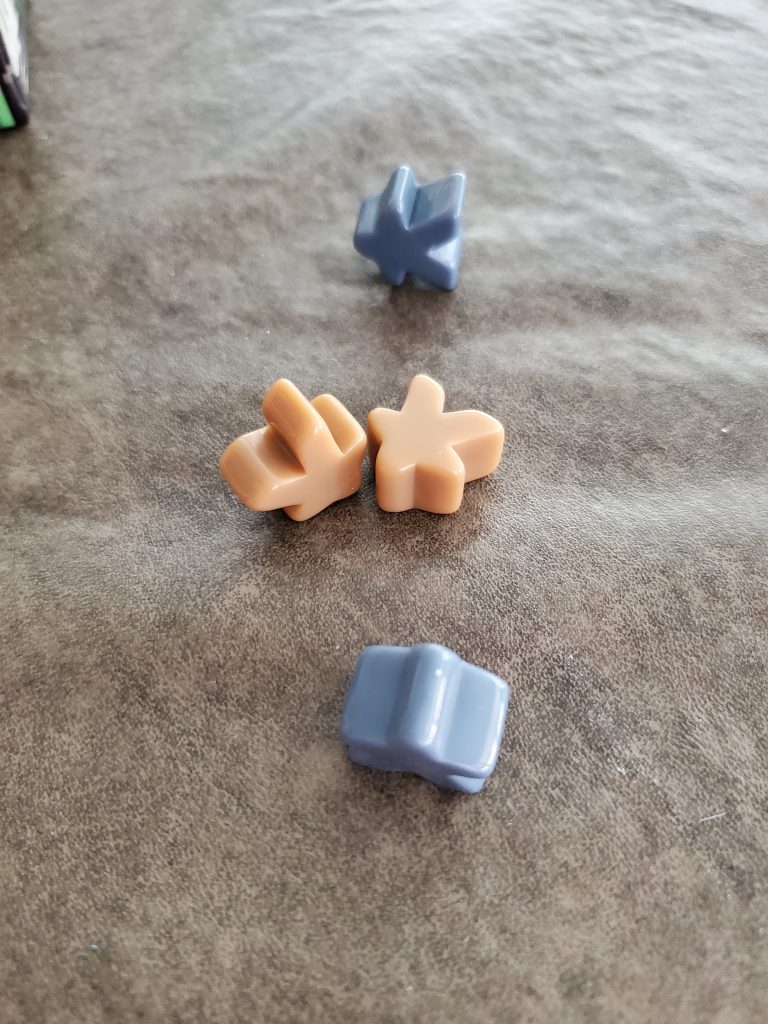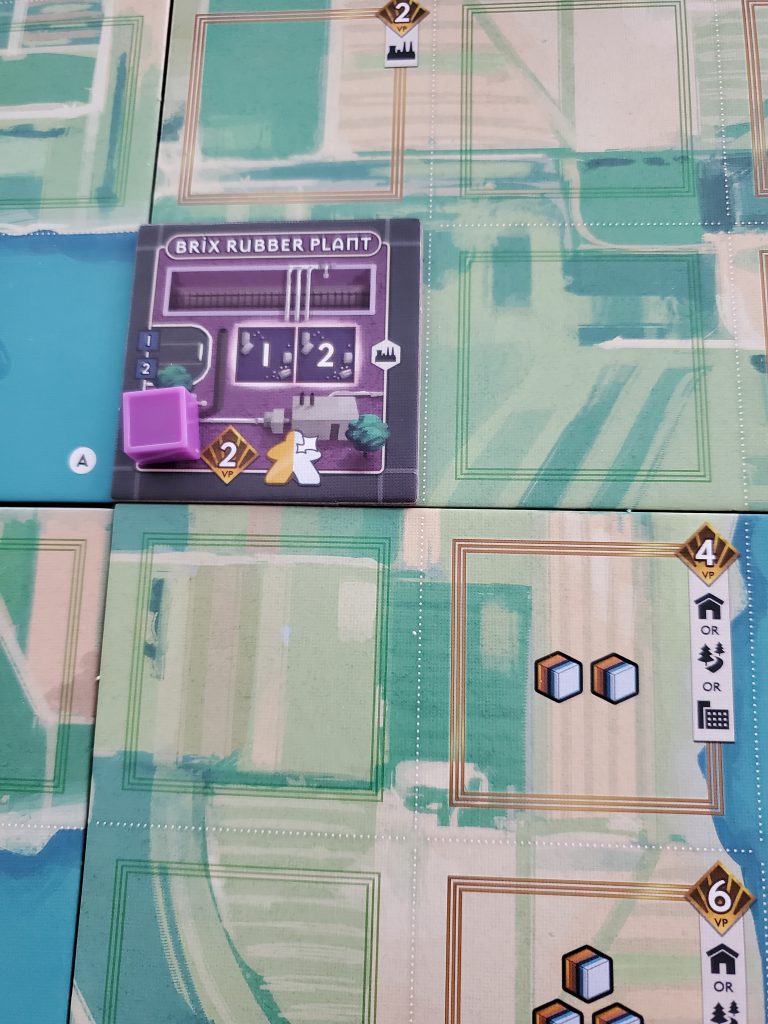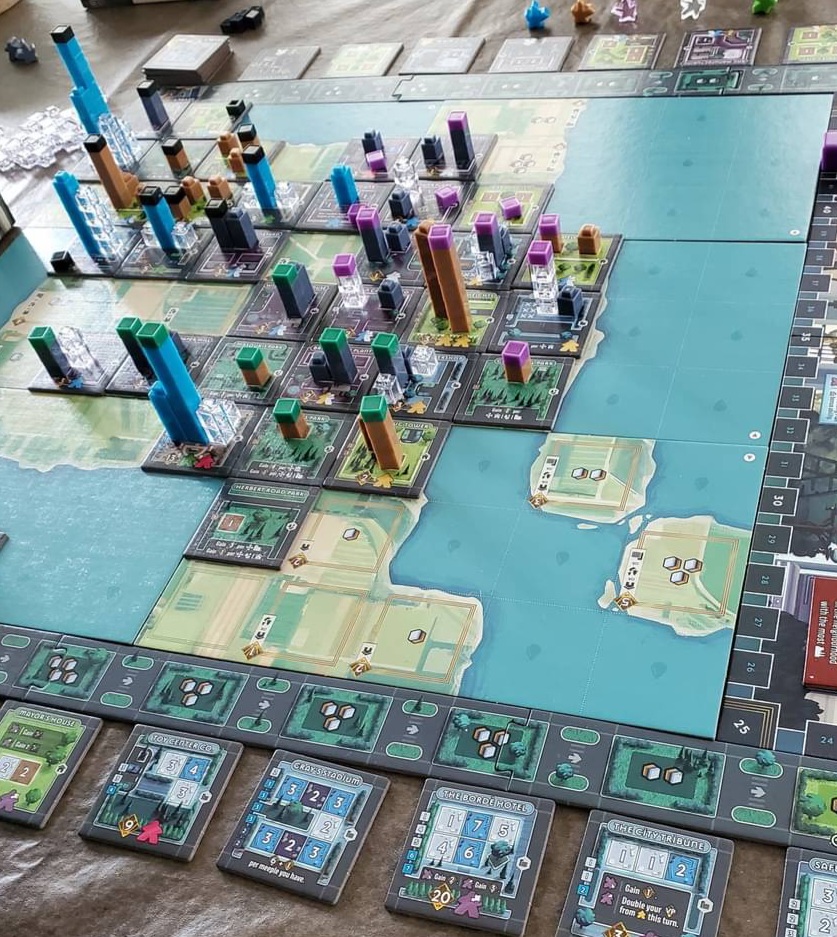It’s hard to imagine that just over a century ago, our nation was just starting to go from mostly dirt roads and buggies to pavement and city skyscrapers. And yet looking at photographs from the modernization of America’s large cities, it sometimes seems like it was impossibly long ago that our skylines were less than ten stories tall! In Rolling Heights, players are the moguls financing the development of their large city with a mix of houses, parks, commercial and manufacturing facilities, even a sprinkle of civic buildings throughout. To do this, AEG decided to forgo dice altogether! Here, you roll the meeples you have in your worker pool in order to gain building resources, purchasing power, build prestige, and even improve worker production.

Meeples that land up on their feet are Working Hard, gaining the maximum benefit allowed from a roll. Sideways or angled landing meeples are Working Steady, which allows you the basic benefits from that worker. Any meeple that can’t get off its back is Exhausted and unable to participate without a reroll ability unless you decide to push your luck and take a Risk roll. If it succeeds, you get to add workers to your pool. But if it doesn’t, you have gone Bust and half your active workers go on strike! They are out for this turn and you have to make do with whoever is left.
Different meeples have different abilities, but the bulk of them give you resources like wood, glass, steel, and concrete to purchase and build tiles on the board. The little resource cubes are used to purchase these tiles from the market and in some cases, play on the neighborhood board to gain building bonuses. Once your building is started on the board and marked by you, it’s time to get resources onto it to complete the building and open for business!

Each completed building will give you a VP reward (prestige points, essentially) and some other perk such as more meeples into your rolling pool, special scoring rules from surrounding buildings, or even special effects for other meeples down the line.
Players build their cities carefully as they try to maximize scoring by watching the tile bonuses, their personal Target Goals, and the Scoring Goals set on the board at the beginning of the game. There is a lot to keep track of and out of three games, all of us were pretty close in scoring by the end.

I really enjoy the visual and physical nature of this game. There is a sense of accomplishment with completed buildings and watching little block towers rise across the neighborhoods. However, having the tallest buildings is not the only way to win the game. Depending on the hidden Target Goals in your hand, you may get an impressive amount of bonus VP from having certain types of meeples in your rolling pool or certain types of building tiles on the board in a certain pattern. This helps shake up the predictability of the game. In fact, in the most recent game, I was enjoying an 18 point lead until my opponent busted out the fact that he got to score TWO of his Hidden Target goals, and because of that, he beat me by one measly VP. I was irate enough to (laughingly) call another regular player and complain about my Almost Victory. There are many Almost Victories in this house.

Rolling Heights can handle up to four players but has a solo mode for those days you need some time to yourself. It is listed as an hour or so of gameplay but we have not managed to do it under two hours so far, whether due to player analysis paralysis or having to scrap and reconfigure plans because of the competition or a new scoring method. The game is solid and enjoyable without being hopelessly complex. I am happy to hang onto this one for a while, even if my victory has been swiped out from under me twice so far!


